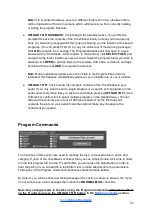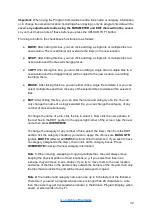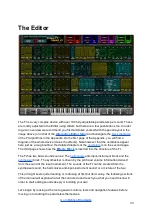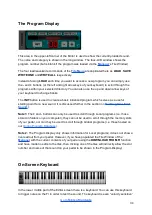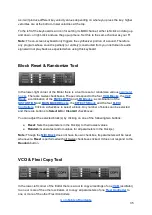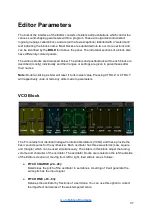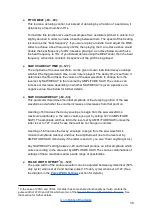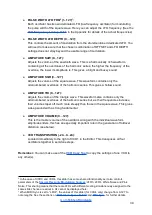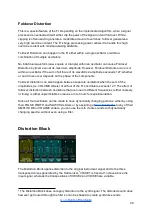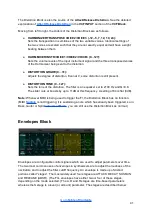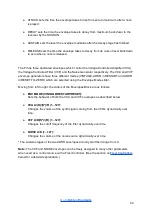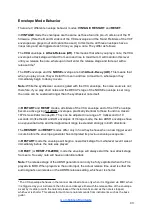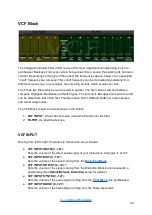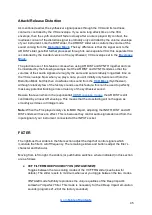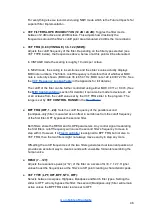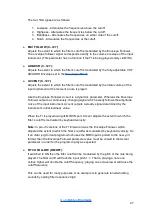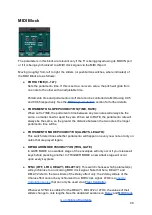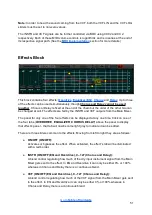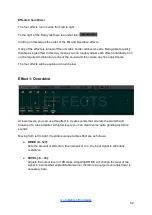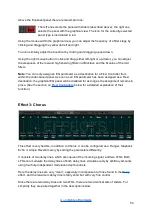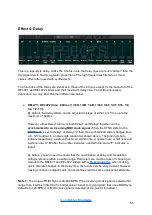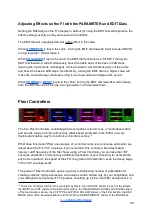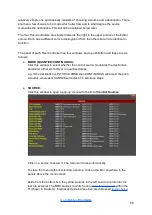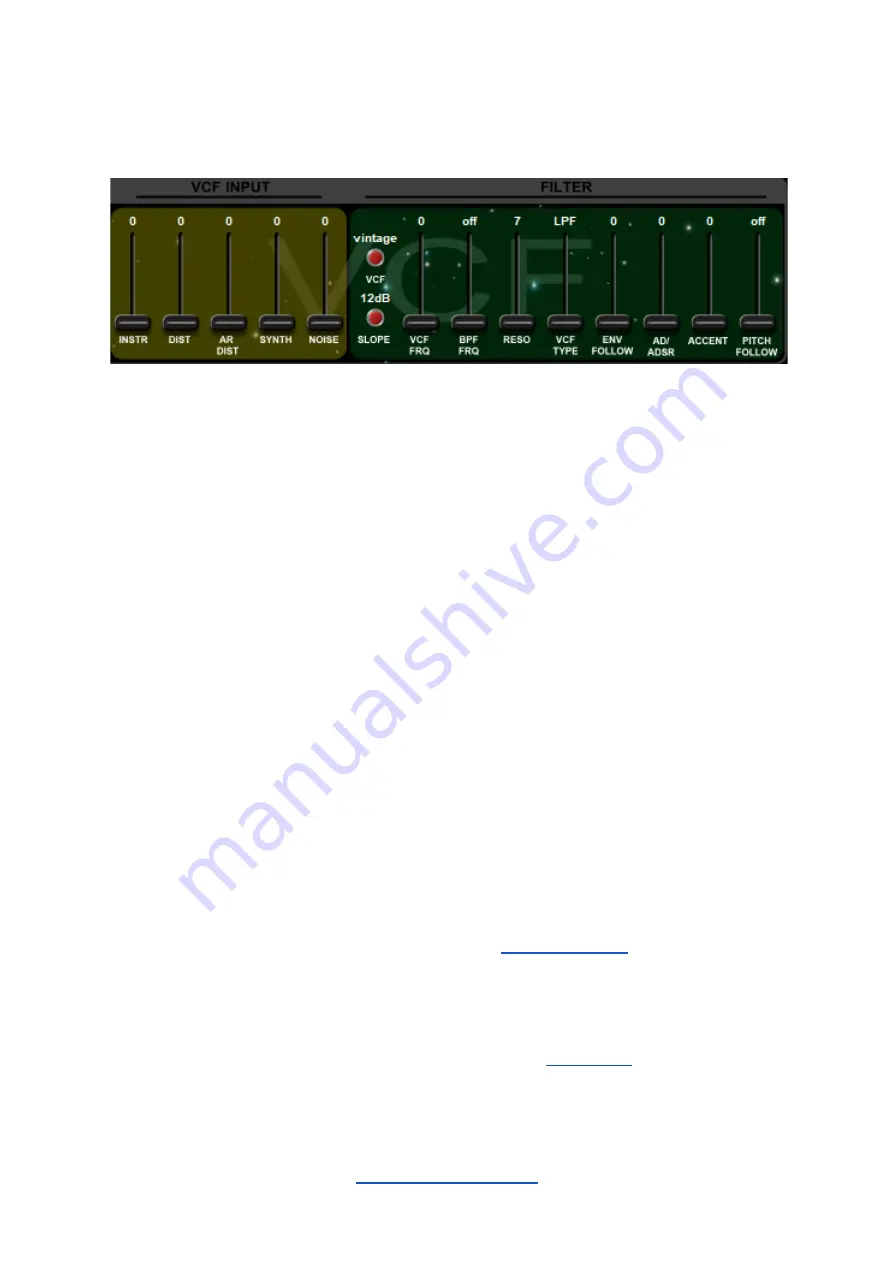
VCF Block
The Voltage-Controlled Filter (VCF) is one of the most important sound-shaping tools in a
synthesizer. Basically it removes certain frequencies from a sound, thus altering its harmonic
content. Depending on the type of filter used, the frequencies
above
,
below
or
at
a specified
“cutoff” frequency are removed. This cutoff frequency can be modulated dynamically from
different sources (e.g. an envelope), thus creating sounds which evolve over time.
The FI has two filters which are connected in parallel. The first can be switched between
Lowpass, Highpass, Bandpass and Notch types. The second is Bandpass-only and its cutoff
can be offset from that of the first. The filters have both 12dB and 24dB per octave slopes
and two scaling modes.
The VCF Block is split into two sections in the Editor:
1.
VCF INPUT
- A five-channel audio mixer which feeds into the filter.
2.
FILTER
- As described above.
VCF INPUT
Moving from left to right, the sliders in this section are as follows:
●
VCF INPUT INSTR (0...127
)
:
Sets the volume of the direct audio signal of your instrument. Unity gain is at 127.
●
VCF INPUT DIST (0...127
)
:
Sets the volume of the signal coming from the
.
●
VCF INPUT AR DIST (0...127
)
:
Sets the volume of the signal coming from the Distortion Block but processed in a
special way. (See
Attack/Release Distortion
below for details.)
●
VCF INPUT SYNTH (0...127
)
:
Sets the volume of the audio signal coming from the
(the synthesizer).
●
VCF INPUT NOISE (0...127
)
:
Sets the volume of the audio signal coming from the Noise Generator.
44


